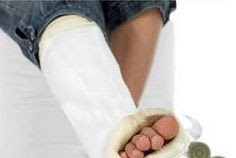The article “Casino Patron Suffers Severe Knee Injury on Escalator - Unreasonably Dangerous Condition on the Casino Premises”, posted on November 7 last year, highlights the result of an accident, which injured a casino client in an escalator.
The issue involved an injury suffered by a customer whose pants were entangled in an escalator. According to the article, the accident victim suffered serious knee injuries, along with other traumatic injuries, and required surgery.
As a result, the victim sued the property owner and held them responsible for her injuries under premise liability. The customer filed for for a $ 20,000 damage lawsuit .
When there is hazardous condition in a premise that results in harm and injury, an accident victim may file damages under the premise liability. By law, it is the responsibility of a property or business owner to make sure that no conditions exist that could cause a person to slip or trip and fall.
Slip and fall accidents happen most in poorly lit hallways, damaged staircases, uneven sidewalks, debris or liquids left on the floor, and other unsafe conditions.
In determining the fault of business or property owners under a premise liability, the three requisites must be proven:
- that the owner of the property or business caused the condition that resulted in the slip and fall accident
- that the owner knew about the hazardous condition but did nothing to remedy the situation
- the owner should have known about the unsafe condition and done something to fix it.
Under premise liability, a certain standard of care and “reasonableness” also applies to so-called licensees and invitees. Licensees are persons who enter a property on their own or as social guests of the property owners while invitees refer to people invited into the premises, such as a customer in a store.
There are several factors involved in determining whether the standard of reasonableness required by an owner toward licensees and invitees has been met. These include the following:
- Circumstances under which the visitor entered the property
- Foreseeability of the accident or injury that occurred
- Use to which the property is put
- Reasonableness of the owner/possessor's effort to repair a dangerous condition or warn visitors
The standard of care applied by a property owner may help determine the extent of one’s fault in an accident.























